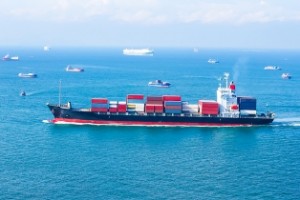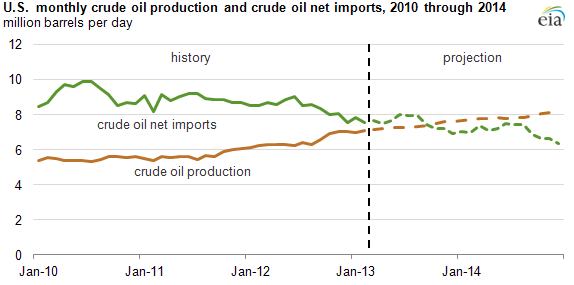Posted - March 19, 2013 -
Bloomberg. - Allen Johnson Jr. and Margaret Cronin Fisk --With assistance from Jef
Feeley in Wilmington, Delaware. Editors: Glenn Holdcraft, David E.
Rovella.Post at Maritime Executive dot com
BP Plc lost an effort to eliminate the possibility of a finding of
gross negligence that might trigger fines as much as $17.6 billion in
the trial over the 2010 Gulf of Mexico oil spill.
“I’m not going to grant that motion,” U.S. District Judge Carl Barbier
in New Orleans today told a lawyer for the London- based oil company. “I
don’t see any point in arguing it.”
BP’s lawyer Andrew Langan asked Barbier to disallow a gross-negligence
finding as lawyers for the plaintiffs suing the company rested their
case. “We don’t think there has been a finding of gross negligence”
against BP, Langan said, only to be immediately rebuffed by the judge in
the nonjury trial.
For BP, a finding of gross negligence would mean the company might be
liable to the U.S. for as much as $17.6 billion in Clean Water Act
fines, as well as unspecified punitive damages to claimants who weren’t
part of a $8.5 billion settlement the company reached with most private
party plaintiffs last year.
The blowout and explosion aboard the Deepwater Horizon killed 11
workers and spilled more than 4 million barrels of oil into the Gulf of
Mexico. The accident sparked hundreds of lawsuits against London-based
BP, owner of the well, Vernier, Switzerland-based Transocean Ltd. and
Houston-based Halliburton Co., which provided cement services.
Legal Tests
The trial over liability for the disaster began Feb. 25. Barbier will
determine responsibility for the disaster and whether one or more of the
companies acted with willful or wanton misconduct or reckless
indifference -- the legal requirement for establishing gross negligence.
For Transocean and Halliburton, findings of gross negligence would mean
the companies might be held liable for punitive damages for all
plaintiffs.
Scott Dean, a spokesman for BP, declined to comment on today’s ruling.
Lawyers for Halliburton and two other defendants, Cameron International
Corp., and M-I Swaco, a unit of Schlumberger Ltd., told Barbier today
they would file motions to erase the gross- negligence claim.
Houston-based Cameron, the maker of the blowout preventer on the
project, agreed to pay BP $250 million in December 2011 in exchange for
the oil company’s indemnifying it from damage claims. The settlement
didn’t cover fines, penalties or punitive damages.
Drilling Fluid
M-I Swaco, which provided drilling fluid, settled with BP last year
without disclosing the terms. Swaco’s lawyers filed a motion today
asking Barbier to find that that there is no evidence that the company
engaged in willful or wanton misconduct. It also asked for a finding
that no acts or omissions by the company caused the disaster, according
to court papers.
Transocean began presenting its defense with testimony by Calvin
Barnhill, a petroleum engineer hired by the company as an expert
witness.
Barnhill, who has investigated some 100 oilfield incidents, disagreed
with earlier testimony by a U.S. Justice Department drilling expert who
characterized the crew of the doomed Deepwater Horizon rig as
complacent.
“They responded every time an event occurred,” Barnhill testified
today. “They were trying to get it right. I think they just
misinterpreted what they were seeing.”
No Intent
After three weeks of testimony in which plaintiff and government
lawyers accused BP, Transocean and Halliburton of placing profits above
safety, Barnhill said he saw no evidence that anyone on the rig
intentionally ignored pressure anomalies in the minutes before the
deadly blowout of April 20, 2010.
“I don’t think anybody out there deliberately misinterpreted what they were seeing,” Barnhill said.
Barnhill said Transocean’s drilling crew had the responsibility to
monitor the Macondo well “at all times” for a dangerous “kick,” pressure
anomaly or other indication of a blowout. A kick is an entry of gas or
fluid into the wellbore, which can set off a blowout.
BP, as operator of the well, was responsible for designing and
conducting a critical negative-pressure test, used to check whether
cementing had sealed off any leaks in the well, he said. The test would
have been used to shut down drilling operations, if it hadn’t been
misinterpreted as successful, he said.
Barnhill said a negative test with even “inconclusive” results should have resulted in a shutdown.
‘Isn’t Baseball’
“This isn’t baseball,” he said. A “tie doesn’t go to the runner.”
Barnhill said the Transocean drill crew should have shut down the well
at 9:30 p.m. the night of the explosion, at the same time that pumps
were shut off.
The subsea blowout preventer and other emergency measures weren’t
activated until approximately 17 minutes later, Barnhill testified.
Transocean drilling supervisor, Randy Ezell, BP well site leader Donald
Vidrine and others made phone calls alerting the command center of the
vessel of continuing increases in pressure despite the shutdown of all
pumps on the rig.
“They started taking actions consistent with well control,” Barnhill
said of Vidrine and the Transocean drilling supervisors and crew
members. “Unfortunately, they were too far gone” by that time, he said.
Moments later, pressurized oil and gas shot up from the well more than a
mile below the Gulf of Mexico. The rig burst into flames and sank two
days later, setting off the largest offshore oil spill in U.S. history.
Engineer Call
About an hour before the blowout, Vidrine told BP onshore drilling
engineer Mark Hafle in a phone call that the test results showed
pressure on the drill pipe and zero pressure on an additional pipe,
called a kill line.
Hafle told Vidrine that “you can’t have pressure on the drill pipe and
zero pressure on the kill line in a test that’s properly lined up,”
Barnhill said. While this indicated the test was unsuccessful, Vidrine
did not stop work and instructed the rig to proceed with operations,
Barnhill testified.
Vidrine apparently never told the Transocean drilling crew about the 8:52 p.m. call with Hafle, Barnhill said.
Barnhill doesn’t believe that supervisors intentionally ignored what he
thought was an “inconclusive” negative test, he said under
cross-examination by plaintiffs’ attorney Paul Sterbcow.
“I really don’t believe these guys would have said ’damn the
torpedoes’” if they didn’t believe they had correctly interpreted the
negative test, Barnhill said.
Criminal Charges
Vidrine and Hafle have declined to testify, invoking their Fifth
Amendment right. Vidrine and another BP site manager, Robert Kaluza,
were indicted on federal charges of manslaughter, have pleaded not
guilty and are scheduled to go to trial next January.
BP pleaded guilty to 14 federal charges, including 12 felonies, and
admitted it misinterpreted a critical pressure test just before the
explosion. It agreed to pay $4 billion in fines and penalties, plus $525
million to settle a Securities and Exchange Commission claim that the
company underestimated the size of the spill.
BP, in settling the criminal prosecution, didn’t resolve the lawsuit seeking civil Clean Water Act fines.
Transocean pleaded guilty to a misdemeanor Clean Water Act violation
and agreed to pay $1.4 billion, including $400 million in criminal
penalties.
The case is In re Oil Spill by the Oil Rig Deepwater Horizon in the
Gulf of Mexico on April 20, 2010, 10-md-02179, U.S. District Court,
Eastern District of Louisiana (New Orleans).
Post to be found at:
http://www.maritime-executive.com/article/BP-Loses-Bid-to-Bar-GrossNegligence-Finding-in-Spill-Trial-2013-03-19/




 ShareThis
ShareThis




 Explorer of the Seas is powered by 6
Explorer of the Seas is powered by 6